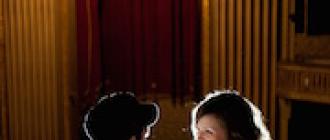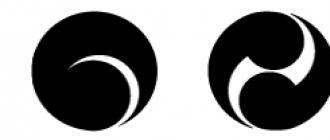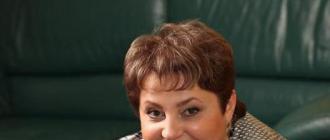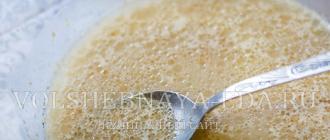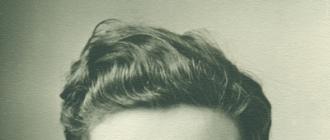The problem of speech impairment in children worries many parents. While children babble touchingly, their speech defects touch adults, but by the age of three it becomes clear what sounds they cannot make. But speech is the main means of communication between a little person and the whole world. For most children, over the years and with practice, this can go away on its own, and for some, such speech disorders are caused by disturbances in the normal functioning of the articulatory muscles and are physiological in nature.
These kids need help. In their classes, speech therapists use respiratory and pronunciation exercises. If these are not enough, experts usually offer a specific, rather effective method– speech therapy massage for children at home. The impact of any massage is beneficial for the body, especially for metabolic processes, blood circulation and nervous system. Therapeutic and preventive qualities speech therapy massage help normalize speech and improve emotional state baby.
The skill of healing people by kneading special points of their bodies has existed for several millennia. Already in ancient times, the Aesculapians learned the benefits of massage, which allowed them to overcome serious illnesses. Speech therapy massage arose much later, but is also based on practical knowledge.
The sources of verbal failures come from many causes. Sound pronunciation disorders are caused by hereditary factors, abnormal pregnancy, delayed mental development, and disorders of the speech apparatus. The diagnosis can only be determined by a specialist. Based on the specifics of the disorder, the speech therapist determines the type of failure and prescribes treatment.

Disturbances in the normal functioning of the articulatory muscles prevent the child from accurately pronouncing sounds and words. The speech apparatus includes the tongue, lips and facial nerves. All this plays an important role in speech development kids. Logo massage for children is a local type of massage, as it is performed exclusively on the articulatory muscles.
Carrying out a full course will help the child master the entire sound complex of speech and strengthen his articulatory apparatus. Positive changes usually result. If there are obvious speech errors, you should follow the recommendations of a specialist who, before choosing tactics and type of manipulation, examines by palpation the condition of all muscles involved in speech formation.
Indications for speech therapy massage
The speech therapist chooses the right type massage that can activate those areas of the verbal apparatus that were not working, which helps to gradually improve the tone of all muscles responsible for speech activity. Such opportunities allow the use of speech therapy massage techniques in the treatment of dysarthria, dyslalia, rhinolalia and other ailments. These manipulations can be carried out from 2 months, although at such a time they are preventive measures, they simply prevent the appearance of disorders.

In serious cases of disorders, speech therapy massage is used, which restores vocal capabilities, tones the muscles of the speech system, and shortens the period of development of pronunciation. Even obvious neurological symptoms can be treated with this technique and give good results.
Impact on significant speech centers - tongue, lips, earlobes, neck - is prescribed for children with the following congenital and acquired disorders:
- with partial loss or incomplete voice disorder;
- with various speech anomalies;
- with excessive intensity of the facial muscles;
- with excessive reflective salivation;
- with a failure of the entire pronunciation aspect of speech;
- with cerebral palsy;
- with defects in the formation of articulatory muscles;
- with all types of logopathies.
All these shortcomings require an indispensable and urgent correction, time-consuming and labor-intensive, but necessary, because in the future, poor-quality diction will hinder many types of activities that a grown child wants to engage in. Serious violations can even lead to disability. Therefore, you should know how to do speech therapy facial massage for a disabled child.

Goals of speech therapy massage
The main tasks that speech therapy facial massage for children sets for itself and which he can cope with are:
- correction of precise articulation of sounds;
- improving the situation with the vocal cords;
- streamlining respiration at the time of conversation;
- prevention of mental stress as a result of speech defects;
- a total improvement in the quality of the entire speech apparatus and speech itself.
This procedure also serves to reduce the excess amount of saliva produced, which is often found in children, which also interferes with correct diction.
- colds and respiratory diseases;
- inflammation of the mucous membrane of the gums and eyes;
- stomatitis;
- enlarged lymph nodes;
- herpes.
Massage is carried out very carefully in children with convulsive diagnoses, cerebral palsy, autism, and Down syndrome. When carrying out a massage procedure, serious concentration, accuracy and professionalism are required.
Specifics of logomassage at home
At the time of the massage, the baby should feel comfort and trust, not feel anxiety, so you should always find an approach to him, talk to him, distract him with something. Babies have a session in a stroller or on their mother’s lap. Later, children get used to the specialist’s manipulations and calm down.
The session time is 2 hours after eating. It is recommended to rinse the child's mouth thoroughly.

Types of speech therapy intervention
There are several types of manipulations with the sphere of speech muscles.
- Classic massage includes the usual massage techniques: stroking, rubbing, kneading and vibration. It serves to activate and stimulate muscle tone.
- Acupressure deals with biologically active points with a cluster of blood vessels and nerve endings.
- Hardware massage uses vacuum or vibration devices. Its special type - probe - was developed according to the original method of E.V. Novikova. One of the recognized techniques - Dyakova massage - is used by many speech therapists.
Self-massage is performed by the child with his own hands. It involves activities that involve massaging the face and tongue, such as pushing the tongue through connected teeth.
Pre-warm-up
Speech therapy begins with a general facial massage, which lasts several minutes. The main techniques are light stroking and vibrating movements that are pleasant to the child. The directions are very diverse:

- the forehead is massaged from bottom to top and from the middle towards the temples;
- lower eyelid - starting from the outer corner to the nose, upper - vice versa;
- from the nose to the temporal region and from the corners of the mouth to the ears;
- from the chin to the earlobe.
To relax the neck muscles and the root of the tongue, rock the baby's head, smoothly turning it from one side to the other. Now it is advisable to move on to massaging your lips and tongue.
Massage technique
Reduced muscle tone caused by rickets, Down syndrome and other diseases requires activation of muscle groups. Manipulations begin with treating the facial muscles, then moving on to the rest. Classic techniques are used with gradually increasing pressure, trying not to cause harm to the child. discomfort. Stroking the forehead and rubbing the cheeks are relevant. It all ends with light tapping and pinching. The lip muscles are kneaded from the center to the corners of the lips - each lip separately, then the nasolabial fold.

With increased muscular excitation caused by brain injury during childbirth or during intrauterine development, as well as hypoxia, rubella, and birth injuries, a relaxing technique is used. It consists of classic stroking and vibrations. The session begins in the collar and shoulder areas and continues with treatment of the face, lips and tongue. Relaxation is carried out with slow, smooth and slightly pressing movements, repeated 8-10 times.
A professional performs massage of the tongue using special devices. At home, use a spoon or simply an index finger, which is used to stroke, starting from the tip of the tongue towards the root. During the massage, using teaspoons, the convex side of the instrument involves stroking and rubbing the forehead, temples, cheeks, mouth and neck area, chin and cheekbones.
Parents can save their child from a speech disorder and teach them to speak impeccably; to do this, they must notice the problem in time and make every effort to eliminate it. Speech therapy massage will help them with this, which should be prescribed by a pediatrician if there is a certain diagnosis. It can be carried out with a specialist, as well as at home, having first become acquainted with the rules and technique of implementation.
The success of healing will largely depend on the regularity of classes and the patience of parents.
I would like to note that speech therapy massage in Moscow is best done by a professional. For example, at Ekaterina Ruslova at the Children's Center Slukhon on Pilyugina (metro Novye Cheryomushki).
The appearance of a small copy of mom or dad in the family causes joy and tenderness. First, you look at his every fold and feature, and then you impatiently wait for him to say the first word. As long as the baby is just cooing, there is no reason to worry. Growing up, the baby begins to master speech skills, but the child’s development is always individual. It may turn out that your treasure will encounter certain difficulties while mastering speech. Obvious delays or various defects require timely correction. For the last ten years, speech therapy has resorted to massage of the child’s tongue - this massage is aimed at eliminating various articulation disorders and speech defects in children.
Speech therapy massage is a very effective procedure that is aimed at developing problem areas of the tongue and improving articulationIn what cases is it used?
Massage is the oldest method of treating various ailments. Studying the human body, healers in many countries found special points that, when pressed, could cure many diseases. The speech therapy version of massage for children works on the same principle. Certain points of the tongue, lips, earlobes, cheeks and hands are exposed to manual influence. This massage is prescribed to children when they are diagnosed with the following congenital or acquired abnormalities:
- partial loss or slight impairment of voice;
- various speech defects;
- hypertonicity of the facial muscles (more details in the article:);
- uncontrolled salivation;
- dysarthria (limited mobility of the lips, tongue, palate);
- problems with the development of articulatory muscles;
- (all types);
- severe tension in the facial muscles, causing pronunciation pathology.
 Speech defects in a child require correction, otherwise in the future they will become a serious problem and an obstacle to many activities. Massage is one of the most effective means to correct articulation
Speech defects in a child require correction, otherwise in the future they will become a serious problem and an obstacle to many activities. Massage is one of the most effective means to correct articulation What problems does massage correct?

This article talks about typical ways to solve your issues, but each case is unique! If you want to find out from me how to solve your particular problem, ask your question. It's fast and free!
Speech therapy massage is presented in several types: probe massage by Novikova, massage according to Dyakova, Prikhodko, Krause. Using various techniques and techniques, they all perform the following tasks:
- normalize the tone and motility of the articulatory apparatus;
- increase the duration and force of exhalation;
- develop fine motor skills and hand manipulation;
- develop rhythmic movement of limbs and breathing;
- develop visual differentiated movements;
- stimulate kinetic movements;
- improve emotional reactions;
- contribute to the development of hand manipulation with objects;
- reduce the severity of stuttering (more details in the article:);
- reduce manifestation.
Of course, the greatest effect is achieved when speech therapy massage is performed by a trained specialist. If you do not have the opportunity to see a specialist, you can learn some of the techniques of speech therapy massage on your own.
We have prepared for you a description of simple exercises that you can perform at home.
Hand massage techniques
Scientific evidence of the connection fine motor skills and speech skills were acquired by doctors back in the 14th century. Studies have shown that fine motor skills of the fingers are directly related to the functions of the brain. Scientists have also identified areas of responsibility for each finger:
- the large one is connected to the brain;
- the index finger is responsible for the stomach;
- medium affects the spine and intestines;
- unnamed helps the liver;
- The little finger works on the heart.
We will begin our training with finger exercises, especially since speech therapy finger massage is safe and beneficial for everyone, it can also be performed on a newborn child (see also:). At the same time, it promotes the development of fine motor skills in children. Before you start massaging your baby’s hands, let’s take care of hygiene own hands- be sure to disinfect them with alcohol or use sterilium, lubricate your palms with baby oil. Let's start massaging the hands:
- We work the little finger from the nail to the base, kneading each joint well. We do the exercise on both arms.
- Press the pads of all fingers 3-10 times. First we apply light pressure, then increase the pressure and increase the number of pressures.
- An exercise similar to the white-sided magpie. We massage the baby's palm with the index finger, making circular movements.
- We use the same circular movements, but we move the index finger from the edge to the center of the child’s palm. We repeat the technique several times.
- For this exercise you need to take a ring massager. We put it on each finger in turn, starting with the little finger.
- We take a rubber ball with spikes or a special wooden massager. We guide the baby along the palm from the wrist to the fingers.
Acupressure and circular massage of the tongue works on the development of the articulatory apparatus. It is better to find out how much your child needs it from a specialist; consultation is also important for competent implementation of the exercises. It is useful to watch the video at the end of the article.
At home, tongue exercises can be done with an electric toothbrush or with a set of children's toothbrushes from the Kampol company (more details in the article:). They will almost completely replace special speech therapy instruments.
When massaging the tongue, circular and point movements alternate, each technique is repeated 3-10 times. Examples of exercises:
- We massage the tongue pointwise, moving the brush from the base along the left edge, the tip of the tongue and along the right edge. "We are writing" English letter U.
- We repeat the exercise. We make circular movements.
- We move the toothbrush in a zigzag pattern, from base to tip, alternating circles and dots.
- We massage the edge on the left side, first pointwise, then in circles. We repeat the exercise on the right edge.
- We draw out the bird (V), starting from the bridle and ending at the tip (we recommend reading:). We “draw” the bird’s tails, first on the left side, then on the right. We alternate massage techniques.
- We draw two parallel lines - the left edge, then the right edge. We alternate movements, starting with point movements.
 It is advisable for parents to master massage techniques from a speech therapist, and only then conduct sessions on their own. Such reinsurance is necessary so as not to harm the delicate articulatory apparatus
It is advisable for parents to master massage techniques from a speech therapist, and only then conduct sessions on their own. Such reinsurance is necessary so as not to harm the delicate articulatory apparatus Lip massage
Children react differently to strange facial manipulations - especially at the beginning of your lessons, misunderstandings may arise. Try to calm the child down and explain the benefits of massage. Do these exercises:
- Lay the ends index fingers on the wings of the nose. Stroking with pressure, moving your fingers along the nasolabial folds. Repeat the movements 8-10 times.
- Place your index fingers on the hollow of your upper lip and move them towards the corners of your lips. The movement should be rubbing.
- Do the same manipulation with the lower lip. Repeat both exercises 8-10 times.
- Pinch your upper and lower lips alternately using your thumb and index finger. Move your fingers from one corner to the other. The number of repetitions is 8-10 times.
- Tap with your index finger above and below your lower lip, making a circle clockwise. The exercises are performed in an active rhythm with increasing strength of movements.
- Place your index fingers at the tips of your lips and form an accordion, first with your upper lip and then with your lower lip. Repeat 8-10 times.
The end of the speech therapy massage is working with the earlobes. 50 circular movements are performed - first in the left direction, then in the right. Between big and index fingers, at their base, a “speech point” is located. We massage it in a circular motion in the same way as the earlobe. After completing the speech therapy massage, praise the child for his patience and encourage him fun game or an interesting fairy tale. It is important that your manipulations bring pleasure to the baby and do not frighten him.
Speech therapy massage for a child includes the whole complex exercises. For kids younger age Mom should do them; older kids can do at least half of the exercises on their own. A similar procedure is indicated in cases where children have slurred speech, cannot pronounce certain sounds, or do not speak at all.
How does speech therapy tongue massage work for children?
Articulation, which is directly responsible for speech, involves some muscles that may be susceptible to hypertonicity. Massage helps reduce it. It also helps reduce salivation and activate muscles with weak contractility. With such exposure, muscle fibers become more elastic and mobile. This is what helps the baby cope with the above problems.
It is worth noting that muscle tone can be increased or decreased. In these cases, the execution technique is somewhat different.
Tongue massage for a child with low tone
Decreased tone, as a rule, is characteristic of the basal region of the tongue. It is massaged with reflex movements. Jerky movements of varying dynamism help strengthen the muscles and, accordingly, the tone gradually stabilizes.
In addition to massage of this organ, in case of decreased muscle tone, the forehead, bridge of the nose, and area of the cheekbones and cheeks should also be affected.
How to give a tongue massage to a child with hypertonicity
A relaxing speech therapy massage for a child with hypertension should begin with the shoulders and neck area. After their muscles are thoroughly stretched and relaxed, you can proceed directly to the tongue:

Massage of the tongue of a child with increased muscle tone should be carried out in combination with the impact on the other components of the articulatory apparatus. Only in this case will it give a positive effect in a relatively short period of time.
Tatiana Gavrilova
Massage the tongue with a toothbrush for dysarthria.
Massage the tongue with a toothbrush for dysarthria.
In the modern world, the problem of speech impairment in preschoolers and primary schoolchildren is recent years has become global. When starting to correct sounds, you need to know the reason for their shortcomings. Violations of sound pronunciation can occur both with dyslalia and dysarthria, an erased form of dysarthria, and rhinolalia. Each diagnosis has its own characteristics.
Dysarthria– a violation of the pronunciation side of speech, caused by insufficient innervation of the speech apparatus. The leading defect in dysarthria is a violation of the sound pronunciation and prosodic aspects of speech associated with organic damage to the central and peripheral nervous systems. Sound pronunciation disturbances in dysarthria manifest themselves in to varying degrees and depend on the nature and severity of damage to the nervous system. In mild cases, there are individual distortions of sounds, “blurred speech”; in more severe cases, distortions, substitutions and omissions of sounds are observed, tempo, expressiveness, modulation suffer, and in general the pronunciation becomes slurred.
Why is dysarthria disrupted by articulation, intelligibility of speech, intonation, tempo, pitch and strength of the voice? Because from the central part of the speech and motor analyzer, motor commands are transmitted to the peripheral speech organs along the nerve pathways. When organic damage occurs directly to the motor nerves or speech departments in the brain, the full transmission of nerve impulses becomes impossible, and the phenomena of paresis or paralysis develop in the speech muscles. And since paresis extends, in addition to the muscles of the lips and tongue, to the palatine muscles, the muscles of the vocal cords, as well as the muscles of the respiratory organs, then we see a violation of the articulation of sounds, a violation of voice formation and a violation of speech breathing.
Most children with dysarthria have impaired sensitivity of the speech muscles, so they almost do not feel the position of their organs of articulation. It is the lack of sensitivity of the speech muscles that causes difficulties in finding the necessary articulation of different articulatory structures. Violation of articulatory motor skills manifests itself in the form of changes in the tone of articulatory muscles, limited range of movements, coordination disorders, the presence of various types of synkinesis (accompanying movements, tremor, hyperkinesis of the tongue and lips, breathing disorders, voice formation disorders.
Muscle pareticity organs of articulation are manifested in the following: flaccid lips, the corners of the mouth are drooping, during speech the lip remains flaccid. The paretic tongue is thin, located at the bottom of the mouth, flaccid, the tip of the tongue is little active. With exercise (speech therapy gymnastics), muscle weakness increases.
Muscle spasticity manifests itself in the following: the face is amicable, the facial muscles feel hard and tense to the touch. Lips in a half-smile: the upper lip is pressed to the gums. Many children cannot make a straw out of their lips. The tongue with a spastic symptom is often changed in shape: thick, without a pronounced tip, inactive.
Hyperkinesis with dysarthria, they manifest themselves in the form of trembling of the tongue and vocal cords. Hyperkinesis is often combined with increased muscle tone of the articulatory apparatus.
Apraxia manifests itself in the inability to perform certain movements of the articulatory apparatus or switching from one movement to another.
Deviation, i.e. deviation of the tongue from the midline, manifests itself during speech therapy gymnastics (while holding a pose, switching from one exercise to another).
Hypersalivation(increased salivation) is determined only during speech.
In general, speech with dysarthria is unclear, blurred, and monotonous.
Correction of the sound-pronunciation side of speech begins with normalizing the tone of the muscles of the organs of articulation. For this purpose, speech therapy massage is performed.
Mechanical impact changes the condition of the muscles, creates positive kinesthesia necessary for normalizing the pronunciation side of speech.
Tongue massage is a procedure that affects the tongue to make it easier for the child to reproduce sounds.
Indications for use
Speech defects;
Involuntary salivation;
Dysarthria;
Problems with pronunciation;
Hypertonicity of articulatory muscles;
Insufficient contractility of the facial muscles;
Shortness of breath during conversations.
With hypertonicity of the tongue muscles the effect is relaxing. With increased tone, it is difficult to keep the tongue outside the oral cavity, the velopharyngeal (gag) reflex can also make it difficult to carry out, therefore, performing a similar procedure with hypertonicity requires compliance with the following rules.
To relax the tongue, perform acupressure exercises with the submandibular fossa and vibrations at the angles of the jaw, grab the tip right hand and perform rocking movements from side to side, back and forth. The movements are smooth, with a gradual increase in amplitude.
Muscle relaxation is achieved by light massage movements from the periphery to the center with a slight pressure force. All movements are sliding. Lightly pressing. Repeat each 8 times. Slow movements reduce tissue excitability.
With hypotonicity of the tongue muscles the direction of massage movements is from the center to the periphery; for hypotension, massage techniques are more active and intense.
To perform speech therapy massage of the tongue, they often resort to the use of additional objects. The most useful assistant in this matter is a toothbrush. The brush should be small in size and have soft bristles. Before the procedure, it must be properly disinfected.
Main massage directions:
1. “The tongue woke up and stretched”
Use the back of the brush to move from the middle of the tongue to the tip or from the tip to the middle of the tongue.
2. "Sunny"
Move the brush in directions from the center to the periphery or from the periphery to the center (do not touch the root of the tongue)
3. “Herringbone”
First, move the brush along the length of the tongue, then along the lateral edges of the tongue from the center to the periphery or from the periphery to the center.
4. "The wind blows to the right"
Move the brush in horizontal lines from left to right or right to left.
5. “Smoke is coming from the chimney”
Zigzag movements of the brush along the surface of the tongue from root to tip or from tip to root.
6. "The wind blows to the left"
Move the brush in horizontal lines from right to left
7. “Rain is dripping” Tap the tongue with the bristles of a brush
8. “Leaves are falling from the trees” Tap the back of your tongue
side of the brush
9. "Big Puddle"
Move the back of the brush clockwise from the middle
tongue to the edges
Fairy tales for massage
"Autumn Tale"
Tongue woke up and stretched (exercise No. 1).
Tongue looked out the window - the sun was shining! (exercise no. 2)
A Christmas tree with fluffy branches grew under the window (exercise No. 3).
Suddenly it blew strong wind, and the Christmas tree tilted to the right (exercise No. 4).
Suddenly the breeze blew to the left, and the Christmas tree tilted to the left (exercise No. 6).
The sun hid behind a cloud, and it began to rain heavily (exercise No. 7).
Autumn leaves fall to the ground (exercise No. 8).
It is raining, and a large puddle has spilled under the window (exercise No. 9).
"Winter's Tale"
Tongue woke up and was basking in bed (exercise No. 1).
Tongue looked out the window - it was snowing (exercise No. 7).
Tongue went out for a walk, and the wind was blowing outside (exercise No. 4).
The tongue sees smoke coming out chimney(exercise no. 5).
Suddenly the breeze blew to the left, and the smoke leaned to the left (exercise No. 6).
The puddle under the window froze, and Tongue began to roll around on it (exercise No. 9).
There was also a big slide in the yard (make a “slide” with your tongue).
Tongue started sledding down the hill! (move the back of the brush along the “slide” from top to bottom).
Covered in snow Tongue!
He began to knock the snow off his hat with his mittens (exercise No. 8).
Tongue cleaned his overalls and went home (exercise No. 1).
When starting to correct sounds, you also need to know that articulation improves with lengthening the exhalation and sufficient pressure of the air stream. Therefore, it is better to start making sounds while lying on the couch. The child inhales a “belly full of air” through his nose and exhales smoothly through his mouth. Breathing while lying down - lower diaphragmatic.
Making the sound /P/ in a lying position.
This method is good if the child has macroglasia ( big tongue) or developed the habit of pronouncing sounds between teeth. In this case, first of all, massage of the tongue is necessary to strengthen its muscles, only then should one begin to make the sound /P/ in a lying position. When lying down, the tongue falls back slightly, that is, it does not peek out from behind the teeth.
The speech therapist sits on the edge of the sofa, the child lies his head on her lap. In a lying position, the child is asked to forcefully exhale air from himself, pronouncing “za” (you can use “j”). At this time, the speech therapist holds the child’s chin with his left hand so that the mouth is open, and with his right hand, using a stick, probe or pacifier, he vibrates the tip of the tongue.
I hope you found this article helpful. I sincerely wish that tongue massage and making sounds while lying down will help you and your children cope with difficulties.
Parents are often skeptical about speech therapy tongue massage for children. It’s quite hard to believe that if you carry out the procedure correctly, you can achieve incredible results - the baby will be able to pronounce sounds correctly and make sentences.
Objectives of speech therapy massage
In case of disorders of the speech apparatus, a specialist usually prescribes articulatory and breathing exercises. If there are more serious pathologies, speech therapy massage is necessary. It is considered an unconventional therapeutic method, but very effective. Massage normalizes the functioning of the speech apparatus and increases the tone of the tongue.
Main tasks of the procedure:
- Normalizing the breathing process when talking
- Reducing the impact of stuttering and dysarthria on the child’s quality of life
- Getting rid of moral and mental stress due to incorrect speech
- Improvement in pronunciation of sounds
- Formation of the correct trajectory of movements of the lips and tongue
- Strengthening the swallowing reflex
- Improving the condition of the voice and vocal cords
- Strengthening the muscles that are responsible for producing sound and general improvement speech apparatus
The main task is to get rid of a speech defect in a child. An excessive amount of saliva in children is often observed - speech therapy massage helps eliminate this problem too.
Speech therapy massage – cons and pros
The procedure is necessary in the following cases:
- Voice defects or occasional loss of voice
- Uncontrolled salivation
- Dysarthria
- Speech defect
- Stuttering and poor pronunciation due to intense muscle tension
- Pathologies of the development of muscles of the articulatory apparatus
There are a number of contraindications:
- Stomatitis
- Enlarged lymph nodes
- Conjunctivitis
- Herpes in the mouth
- Gingivitis
- Colds and acute respiratory diseases
Pathology is studied based on individual indicators. The final treatment option is selected exclusively by a specialist.
Usually massaged by a speech therapist. This is important, as there are complex rules for cleansing and preparing for the procedure. In specialized institutions, a special probe is used for cleansing. If the problem is not very serious, it is allowed to massage the child’s tongue to develop speech at home. Then a toothbrush or spatula will be used.
Speech therapy massage of the tongue requires a high level of attention span, so a parent or other adult who wants to perform this procedure on their own for a child has a great responsibility.
Rules for the procedure
After carrying out an accurate diagnosis on modern equipment The main problems associated with the speech apparatus are identified. Based on the analysis, the specialist determines the cause of the pathology, which makes therapy much simpler.
The structure of the neck muscles, articulatory and facial muscles and upper body region. This helps to identify even small features of speech development in a child.
Rules speech therapy massage for children at home
- It is important to thoroughly ventilate the room before the procedure;
- To begin with, it lasts from five to seven minutes, after which it increases to twenty minutes. It should be remembered that this is also affected by age category. Infants You should not massage your tongue for more than a couple of minutes. For preschoolers - a quarter of an hour, for elementary school students - twenty minutes. The personal characteristics of the baby also influence;
- There are ten to twenty procedures in one course. No more than three sessions are done within a week so that the tongue receptors are not irritated;
- If the procedure causes pain and discomfort in the baby, it is better to stop it. At first, children are afraid of these actions, but after five times of massage they change their minds.
Carrying out a massage
Devices for the procedure may vary. You can massage at home with a toothbrush or spoons.
If you use a brush, it must have soft bristles. Place gauze under your tongue. Replacement will need to be done every two minutes. This is important because babies produce excessive saliva during the procedure.
The child should be in the following position:
- Lying on your back. Place a small pillow or soft cushion under the neck area;
- Sitting in a chair with a headrest;
- Half-sitting in a stroller (small child);
- In the arms of the parents (when the procedure is carried out by a specialist, but the baby is afraid).
The movements are circular, the pressure is not too intense. Spiral movements can also occur, but after language exercises. Intermittent vibration of the brush on the tongue is also allowed.
How effective speech therapy massage is can be easily seen by the baby’s behavior. With his approval, positive emotions will be displayed on his face. Often the procedure is done in a playful way, which will not only allow you to spend time usefully, but also entertain the child.

It is important that the tongue is in a relaxed state. To do this, you need to make careful massage movements in the area of the submandibular fossa.
Stroking without a brush is done with the thumbs, applying gentle pressure. Movements go in the direction from the middle to the side parts. You should never forget to replace the gauze.
If a specialist has prescribed a procedure, it is important to take this with the utmost seriousness - this indicates the presence of deviations from the norm and pathologies. The course not only helps in improving pronunciation, but also in strengthening the muscles that help anyone speak.
Examples of exercises
Massage can be done according to the following algorithm:
- Start acupressure movements, moving the brush along the left side of the tongue, the tip to the right area. outline Latin letter U;
- Do it one more time, then start circular movements;
- Make zigzag movements from the middle to the end of the tongue, alternately pointwise and in circles;
- Massage the edge of the left area, alternating points and circles. Do the exercise on the right;
- Draw a Latin letter V on the tongue in the direction from the frenulum to the tip;
- Draw two parallel strips on the left and right. Repeat the exercises, starting from the points.
Before starting speech therapy massage, it is important to consult a doctor. Special care must be taken with small children. Even newborns can carry out the procedure on their own, but be sure to get a pediatrician’s recommendations before doing so.

